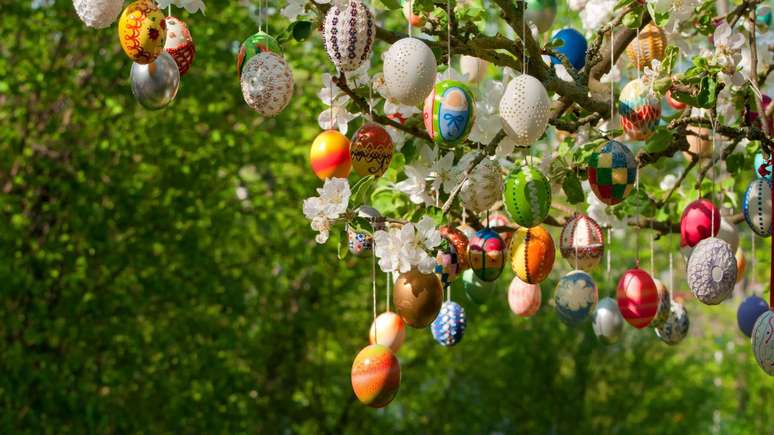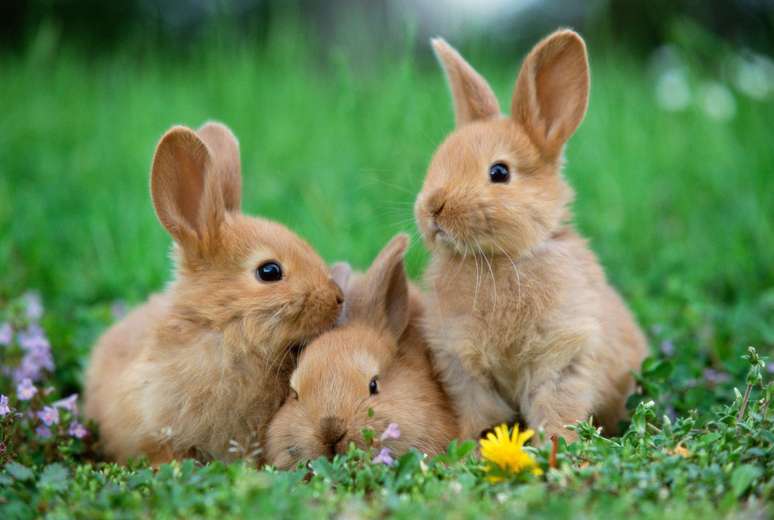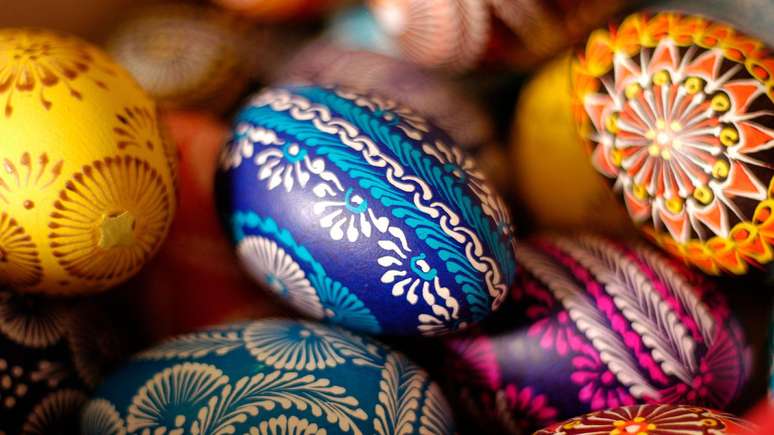What explains the association between symbols of egg and rabbit with the celebration of Easter? There are disputes and different versions of this.
What explains the association between the symbols of the egg and the rabbit with the celebration of Easter, the belief in the resurrection of Jesus Christ? There are different disputes and versions circulating between religious.
One of these versions, which was released over the centuries is that Mary Maddalena would have gone before the dawn of Sunday to the tomb of Jesus of Nazareth-Crocified on Friday who took her material to grease her body. Upon arrival on the scene, he would have seen the appropriate tomb.
A rabbit, which was arrested in the tomb open on the rock, would have been the first living being to witness the resurrection of Jesus. For this reason, he gained the privilege of announcing the good news to children around the world on Easter morning. It is therefore the alleged chocolate egg carrier.
The egg, in turn, is a symbol of life and rebirth. People of antiquity, like the Romans, propagated the idea that the universe would have the suggestive oval form. In the Middle Ages, there were those who believed that the world would emerge inside the shell of an egg.
Therefore, the habit of giving each other with the hen eggs has been established. Some historians hypothesize that this tradition would arise among the Persians. Others attribute their origin to the Chinese.

“Many centuries before the birth of Christ, the exchange of eggs in the spring equinox, celebrated on March 21 in the northern hemisphere, was a custom that celebrated the end of winter”, explains Monsignor André Sampaio Oliveira, a research doctorate in canon law.
“When the Christian Easter began to be celebrated, the pagan rite of the spring festival was integrated into Holy Week. Christians then came to see a symbol of the resurrection of Jesus in the egg.”
US $ 20 million egg
It was a matter of time that the current eggs were decorated. In the Middle Ages, hen’s shells were hand -painted.
“In Germany, the colored eggs hung on the branches of the trees, as if they were Christmas balls. In Russia, they are placed in tombs as a tribute to those who have already gone. In Italy, the Easter dinner tables are decorated with colored eggs”, exemplifies the writer and the researcher Evaristo Eduardo De Miranda, author of the book Guide to Catholic curiosities.
The Russian tsars raised the habit of giving eggs as a new level. Between 1885 and 1916, 50 eggs were commissioned to Peter Carl Fabergé, a famous Russian jeweler, by the Tsar Alexandre 3rd and Nicolau 2nd.

One of them, given by Alexandre 3rd to his wife, the empress Marie Feodorovna, brought inside a clock with sapphires and diamonds. In April 2014, the 8.2 cm high treatment was evaluated at 20 million dollars.
In the 18th century, French pastry chefs decided to try a new preparation technique: how about emptying eggs and filling them with chocolate?
A century later, the eggs were made of chocolate and stuffed with chocolates. The gastronomic invention was even approved by those who see no religious meaning in eggs and rabbits.
This is the case of the Rabbi Michel Schlesinger of the Israelite Confederation of Brazil (Conib).
“Jewish children who get gift eggs for gift are very happy and do not refuse them at all”, the rabbi teases.
“I imagine that even Christian children who experience matzá (zero bread) with chocolate or curd,” suggests.
Symbol
But what about the rabbit? If the animal, like most mammals, does not lay eggs, why has it consolidated as a symbol of the largest Christian party?
From ancient Egypt, the friendly rodent was already synonymous with fertility. On average, they can generate puppies 4 to 8 times a year, from eight to 10 bunnies for litter.
Over time, the rabbit has also become a symbol of the Renaissance, as it is the first animal to leave the den after the winter.
“The hare has already been associated with Crista in Christian iconography, with great ears to better listen to the Word of God”, says the researcher Evaristo de Miranda.

In Brazil, the custom of associating him with the resurrection of Jesus began in the 10s. At the time, the German immigrants painted the eggs by hand and hid them at home to make children find.
“From a historical point of view, it is not possible to specify the origin of the rabbit and Easter eggs. At most, it is possible to know that there is no single version, but different, all valid, narrated by different peoples and cultures”, explains the doctoral student of the University of Campinas (Unicamp) Jefferson Ramalho.
“For us historians, the most important thing is not to identify the” true story “, but to decipher the meanings attributed to these symbols and ideas that try to transmit,” he adds.
For the Catholic Church, the true symbol of Easter is Easter Círio, a large white candle that symbolizes the resurrection of Jesus. In it the letters Alfa and Omega are engraved, the first and last Greek alphabet, indicating that the son of God is the beginning and the end.
“The greatest symbol of Easter is the light of Christ. The light of Easter Sunday opposes the darkness of the Friday of the Passion. What was pain and sadness become strength and joy”, says the theologian Isidoro Mazzarolo of Puc-Rio.
This report was originally published on March 30, 2018.
Source: Terra
Rose James is a Gossipify movie and series reviewer known for her in-depth analysis and unique perspective on the latest releases. With a background in film studies, she provides engaging and informative reviews, and keeps readers up to date with industry trends and emerging talents.






